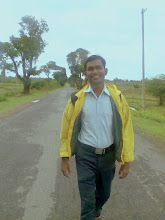Description of the Module
Education module mainly focused on the elementary education system, Annual status of education report (ASER) 2008 and higher education in India. Elementary education in India means eight years of schooling from the age of six. The government has made elementary education compulsory and free. But, the goal of universal elementary education in India has been very difficult to achieve till now. Higher education in India starts after the higher Secondary or 12th standard. While it takes 3 years for completing a B.A., B.Sc or B.Com pass or honors degree from a college in India, pursuing an engineering course would take four years and five years (with six months of additional compulsory internship) for completing a bachelor of medicine or bachelor of law degree. Postgraduate courses generally are of two years duration. But there are some courses like Master of Computer Application (MCA) that are of three years duration. For those who cannot afford to attend regular classes for various preoccupations can pursue correspondence courses from various Open Universities and distance learning institutes in India. After independence in five year plans government of India is spending more and more money to improve the educational status of the general population.
Key Points of the Module
ASER is an initiative of Pradhan a Mumbai based nongovernmental organization to study the quality of elementary education in rural India. ASER 2008 revealed following facts about primary or elementary education.
Among all 6-14 year olds, the proportion of children attending private schools has increased from 16.4% in2005 to 22.5% in 2008.. This increase in private school enrollment represents a 37.2 percent increase over the baseline of 2005. This increase is particularly striking in Karnataka, Uttar Pradesh and Rajasthan. In 2008, private schools have 20% more boys than girls in both age groups; 7-10 and 11-14.Half of all school going children in Kerala and Goa go to private schools. (According to DISE, 95% of private schools in Kerala and 70% of private schools in Goa are government aided.) Between 32% to 42% of all school going children In Nagaland, Punjab, Haryana, Uttar Pradesh and Rajasthan go to private schools. Nationally, the proportion of 7-10 year-olds not-in school is at 2.7%, and proportion of 11-14 year olds not in school is at 6.3%. It find that Madhya Pradesh and Chhattisgarh show dramatic improvement in reading and Chhattisgarh and Madhya Pradesh show improvement in arithmetic also. 61% of children in Std V in India can tell time on a clock correctly. In states such as UP, Tamil Nadu, Karnataka, Andhra Pradesh, Gujarat, about 50% children in Std V can tell time. Bihar, Jharkhand, Orissa, Haryana, J&K, Punjab, Uttarakhand are all above the national average.
In another session on higher education following factors were discussed. India is today one of the fastest developing countries of the world with the annual growth rate going above 9%. In order to sustain that rate of growth, there is need to increase the number of institutes and also the quality of higher education in India. Therefore the Prime Minister of India has announced the establishment of 8 IITs, seven Indian Institutes of Management (IIMs) and five Indian Institutes of Science, Education and Research (IISERs) and 30 Central Universities in his speech to the nation on the 60th Independence Day. The outlay for education during the 11th Five Year Plan, which runs from the current fiscal to 2012-13, represents a four-fold increase over the previous plan and stands at Rs 2500 billion. It shows that growing population and available higher education institutions is not equal or proportional in India. ASER2008 also explored village infrastructure and household characteristics to find links with education. Primary schools are available within 1 km of 92.5% rural habitations and 67.1% villages have government middle school, and 33.8% have government secondary schools. Private schools are available in 45.6% Indian villages. STD booths are present in 58.5% villages while 48.3% village households have a cell phone or a land line connection. Electrical connections were available in 65.9% households surveyed. Pukka road connects 71.9% villages to the outside world. Lowest numbers are Assam (32.7%), West Bengal (44.2%), Bihar (53.2%) and Madhya Pradesh (58.9 %) are states among the poorest connected states. This reveals the relationship between infrastructure and status of elementary education system in India.
Major Leanings
The education module clarified about the present status and the quality of education. The efforts should be initiated from now only to improve the quality of elementary and higher education. At the same time focus should be given to provide the essential infrastructure i.e. teachers, class rooms, libraries, sports materials etc. Sarva shikshana Abhiyana and mid-day meal program are somehow tried best in this concern. By 2015 education should reach to the poorest of the poor and it also accessible to the remote corner of India. To fulfill this dream government should allow private institutions to come forward and take the initiation. It is also the vision of Dr. Kalam.
Especially quality of higher education is losing its importance in the India. Government is only focusing towards elementary education. In this juncture only public - private partnership can enhance the capacity of higher education sector. That’s why government is promoting the domestic and foreign universities to start their institutions and help the people to access the desired need.






No comments:
Post a Comment
Note: Only a member of this blog may post a comment.